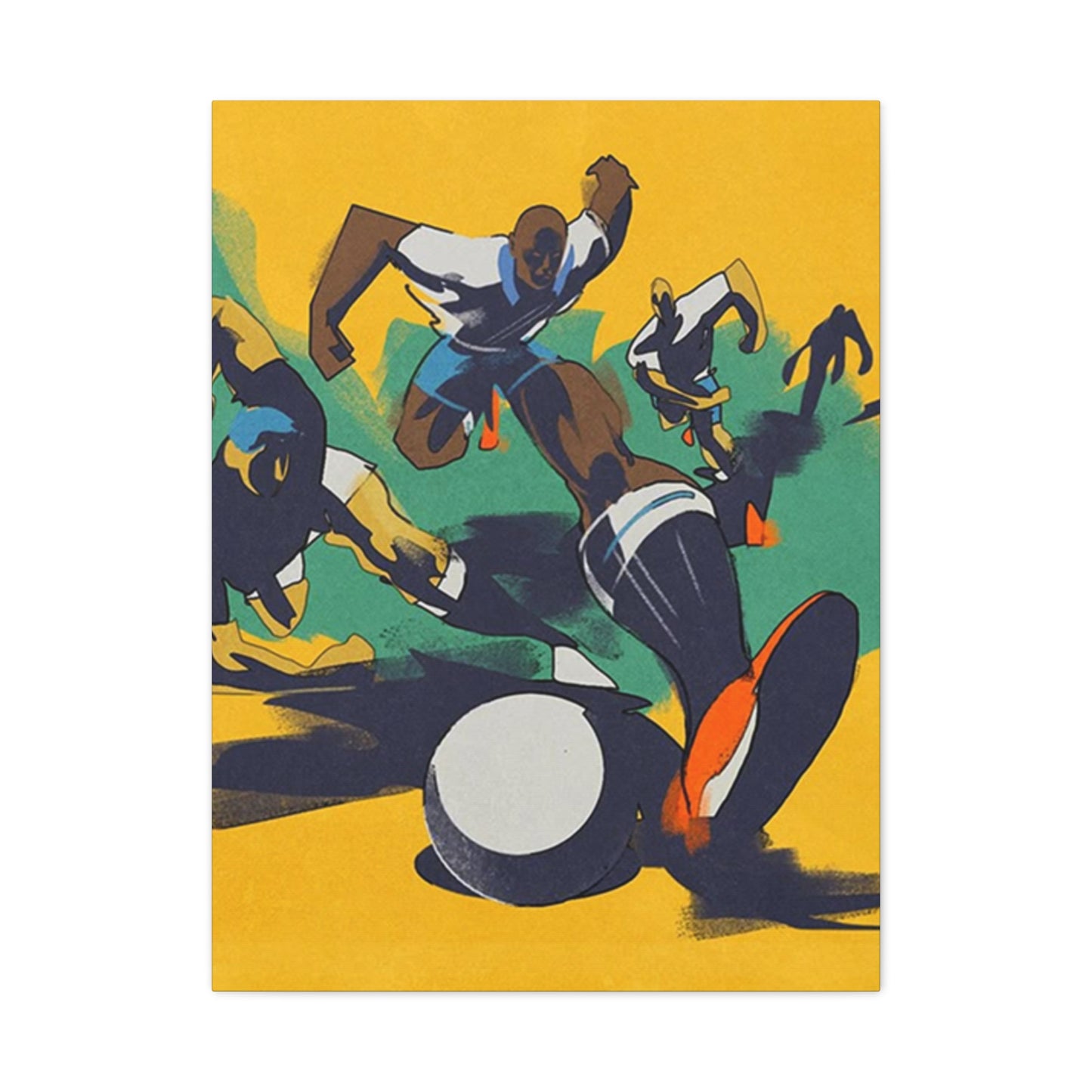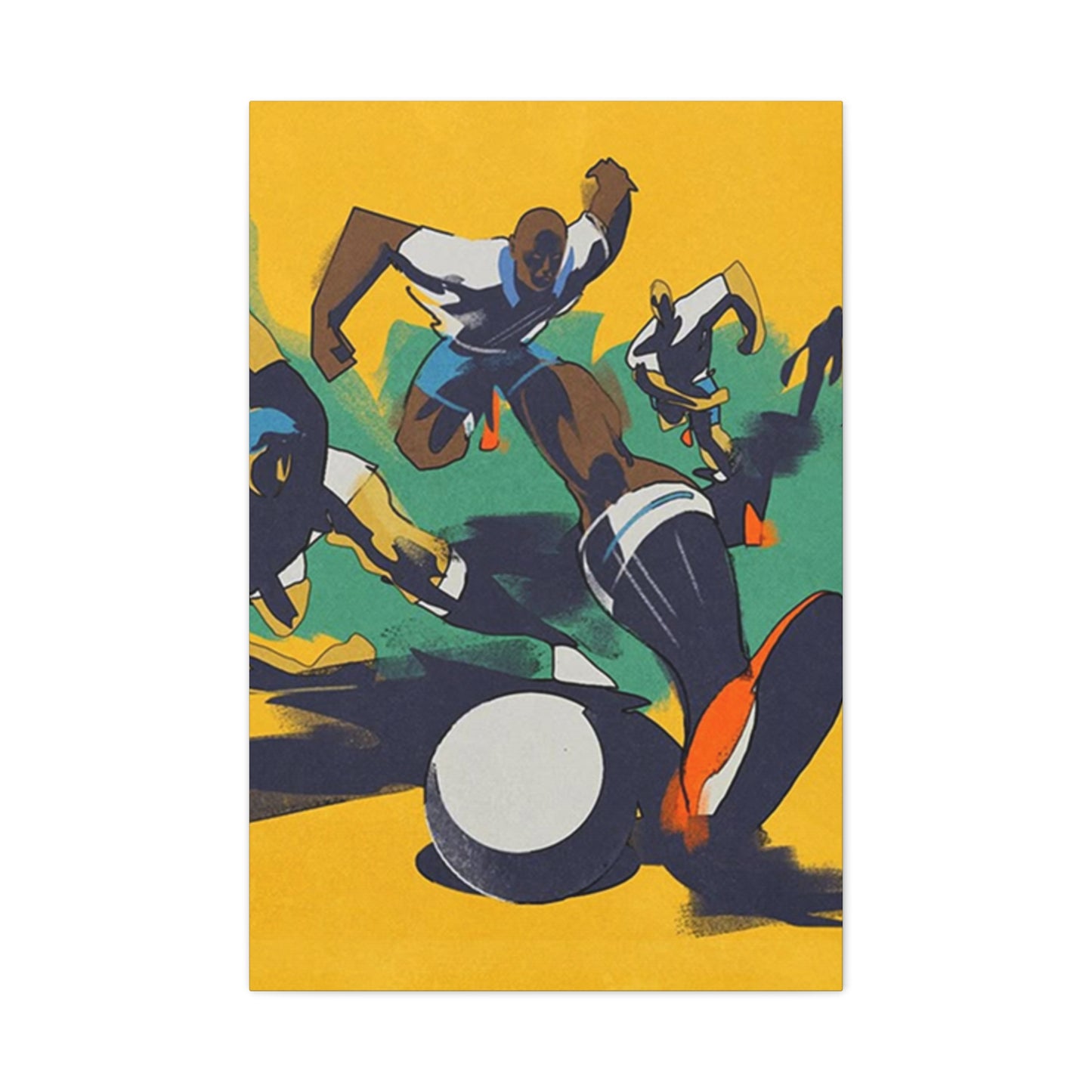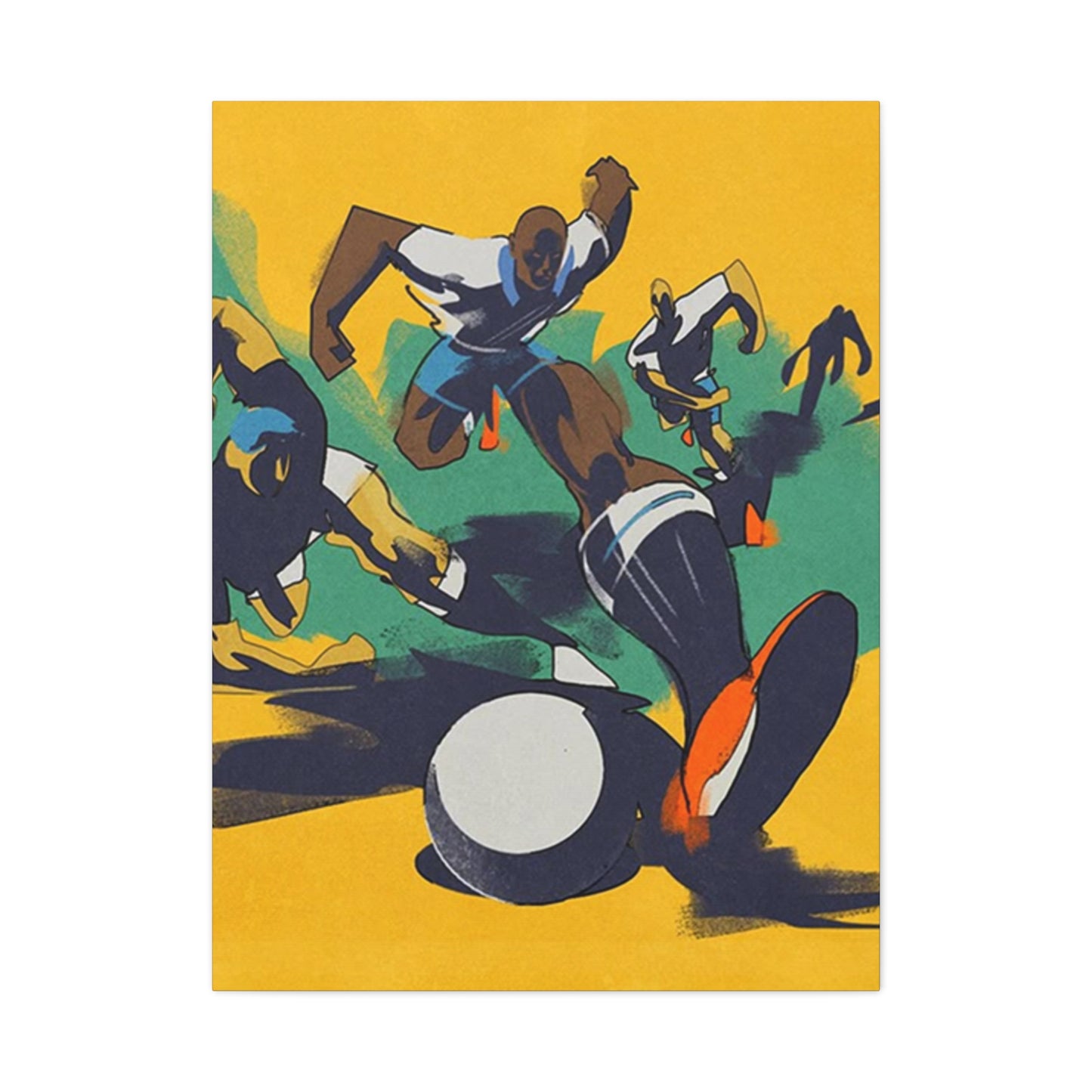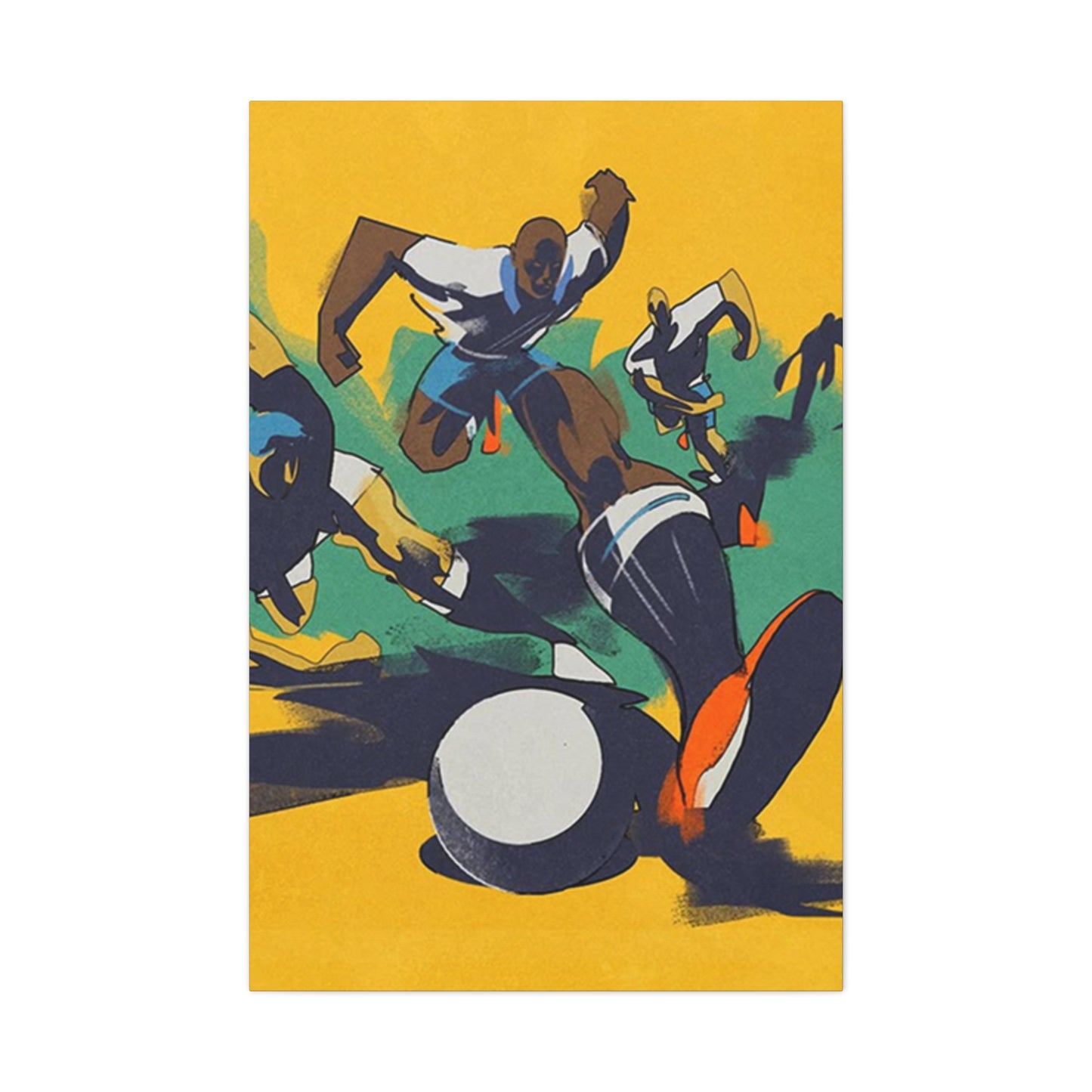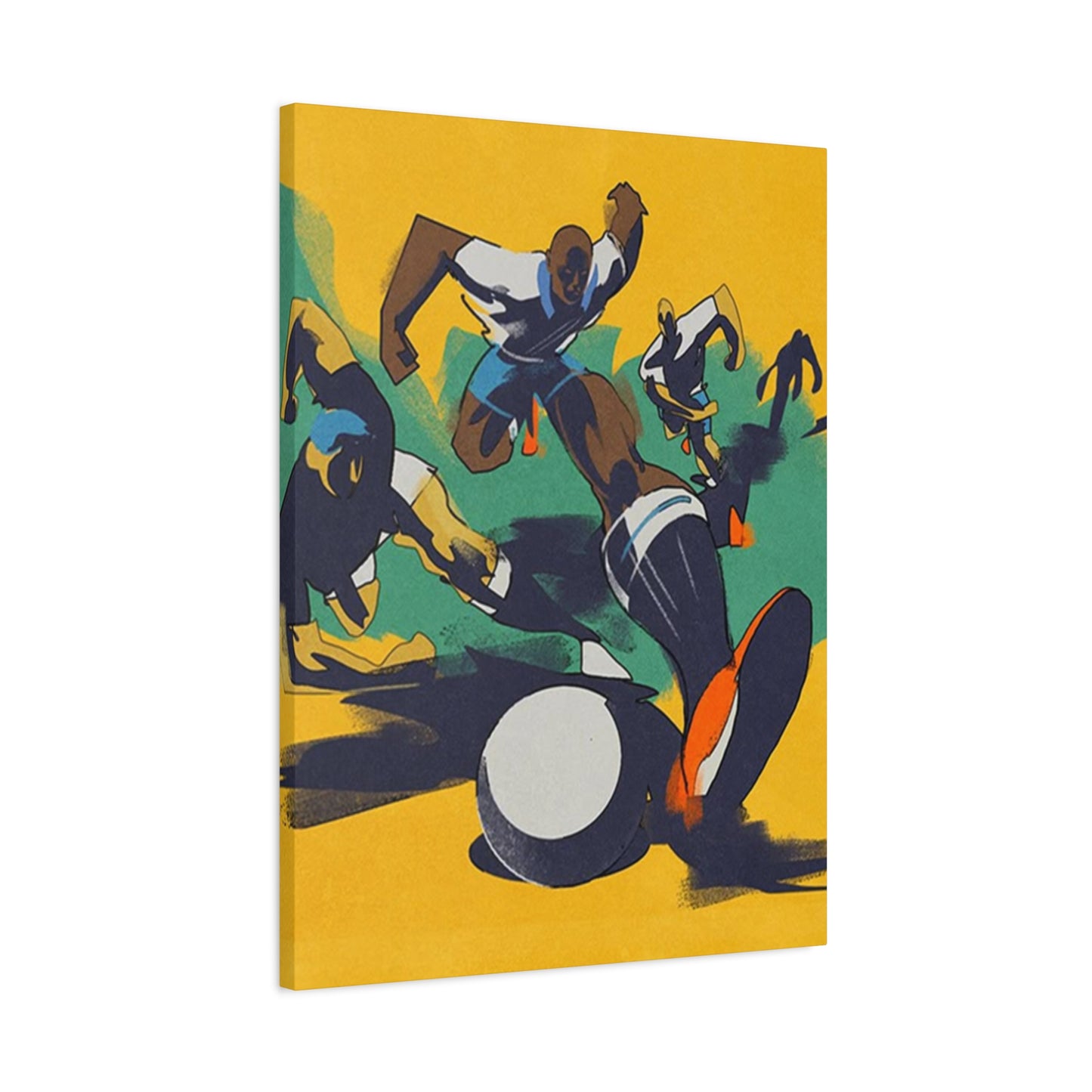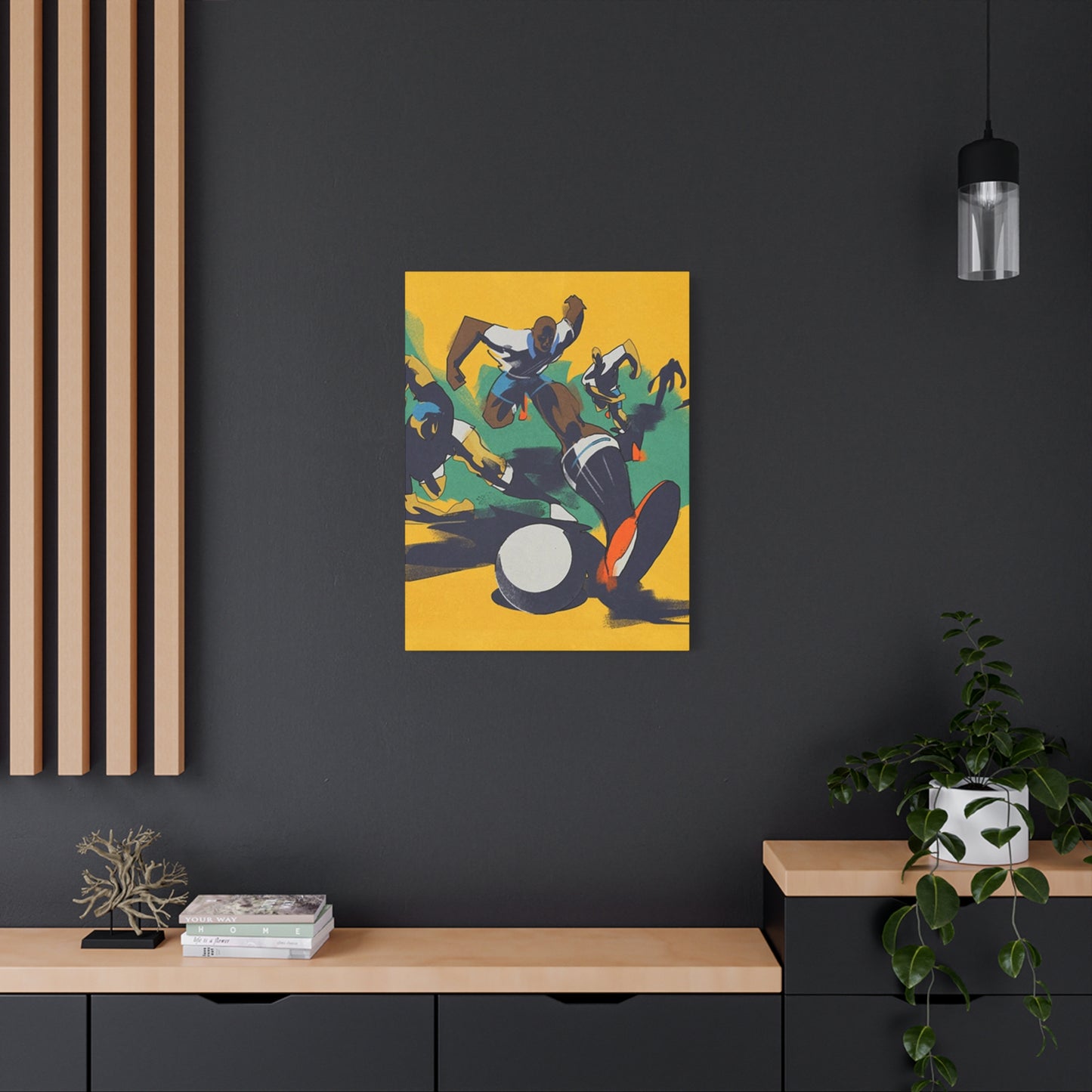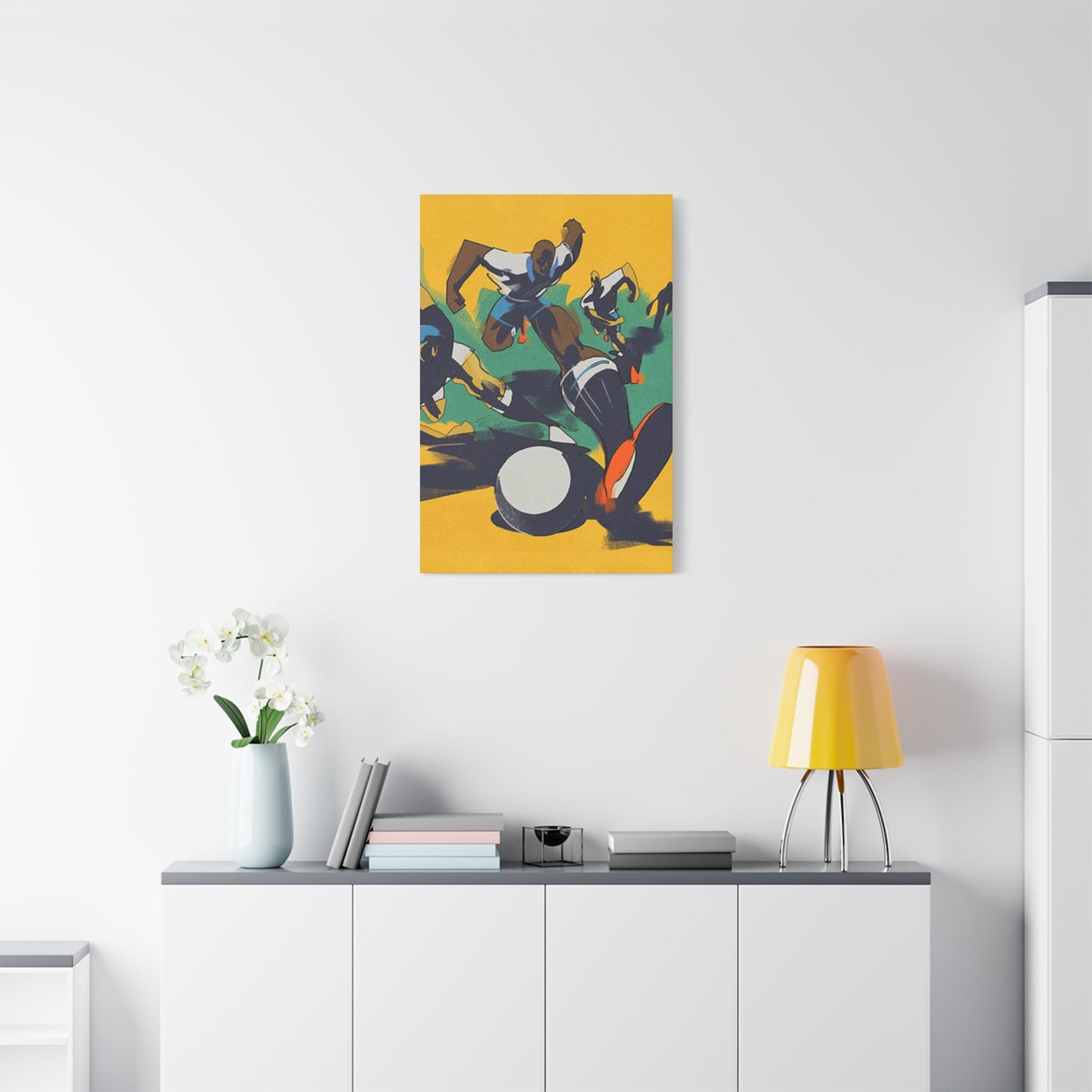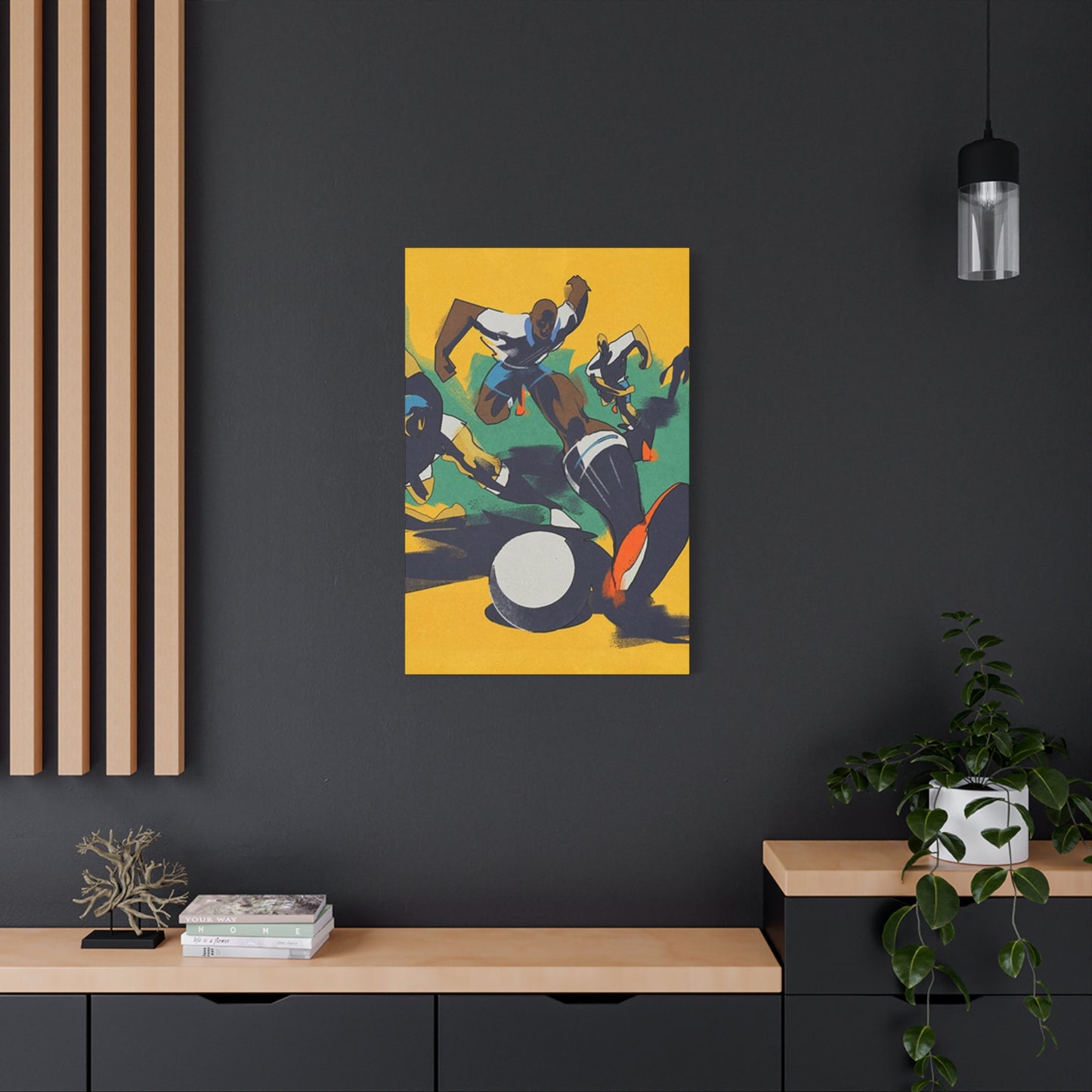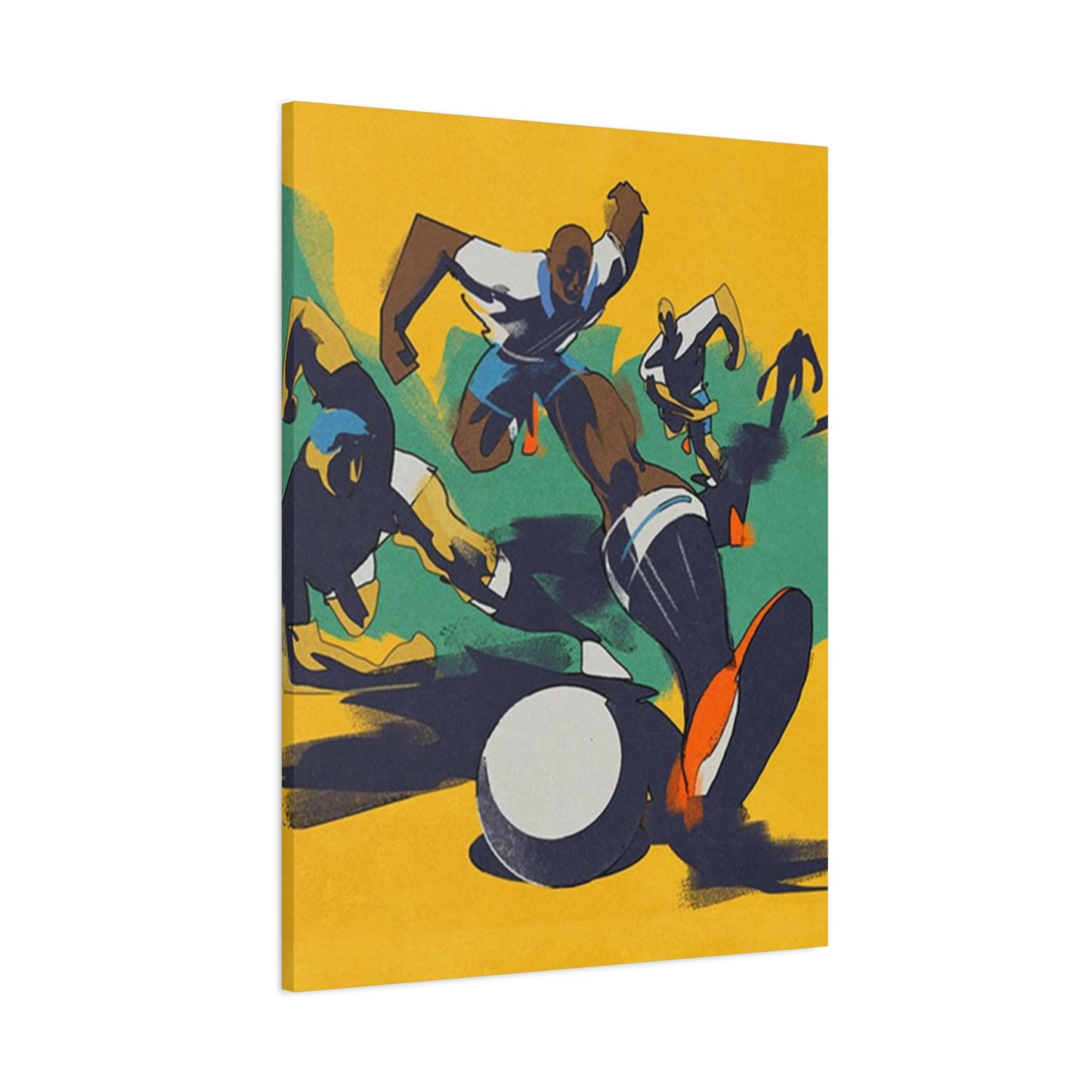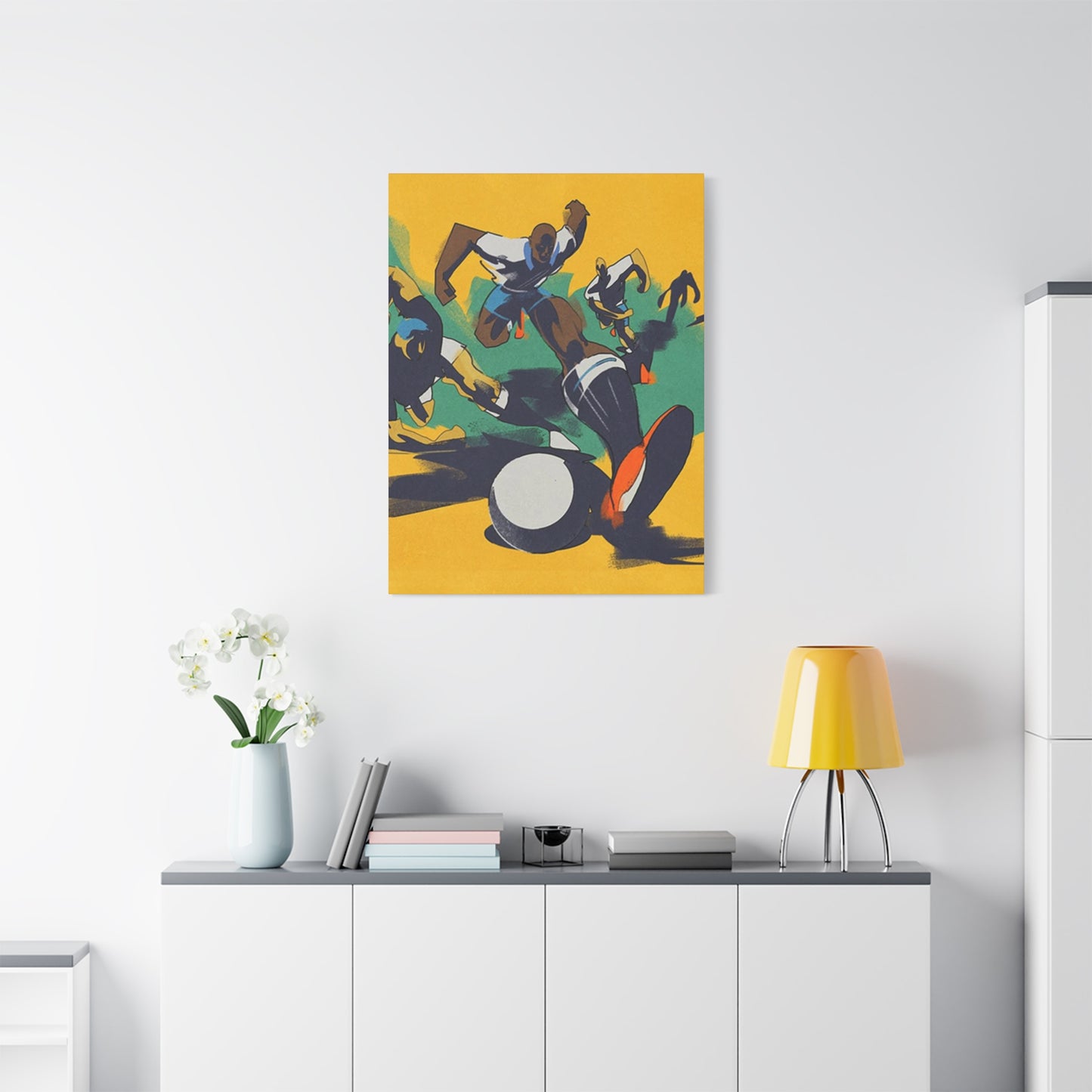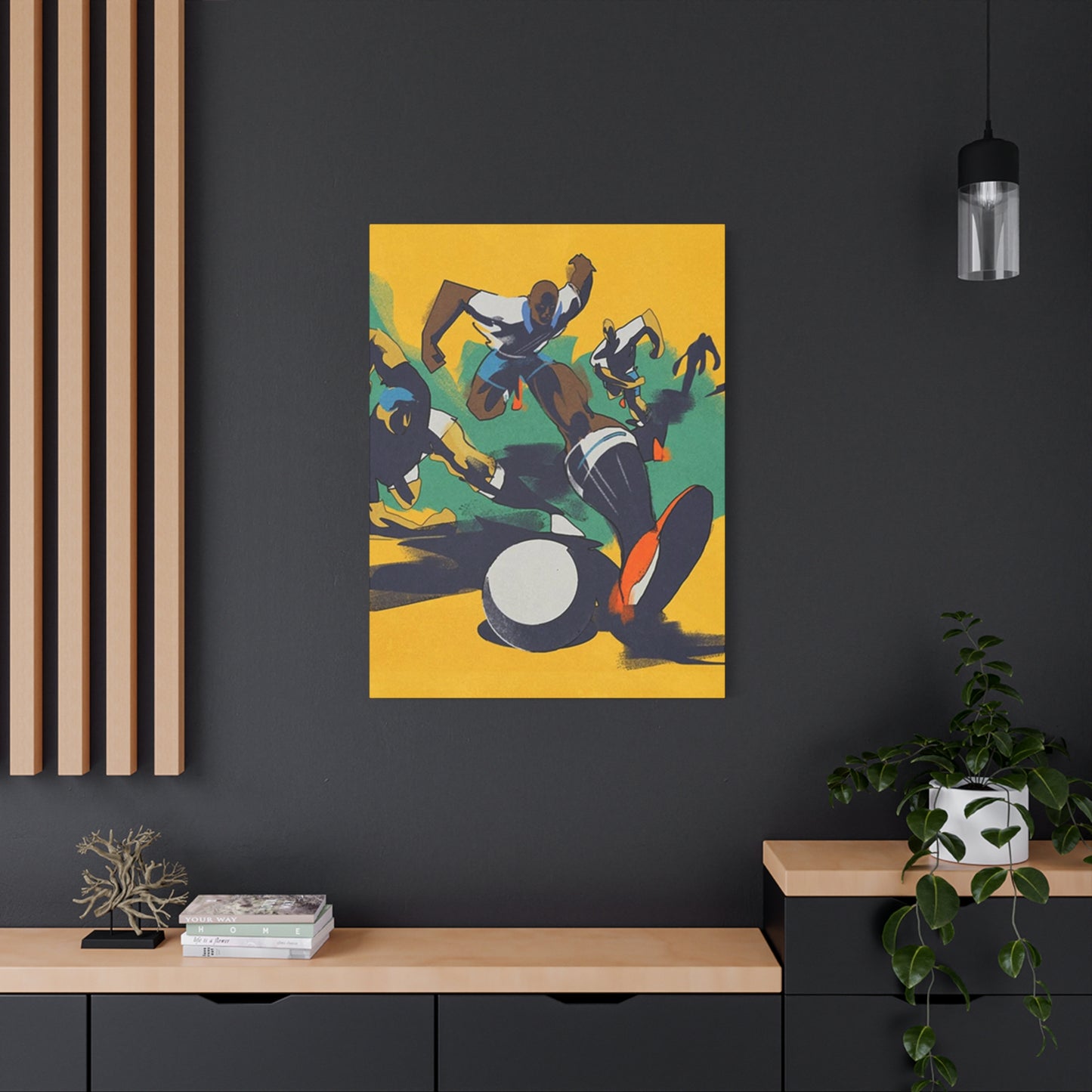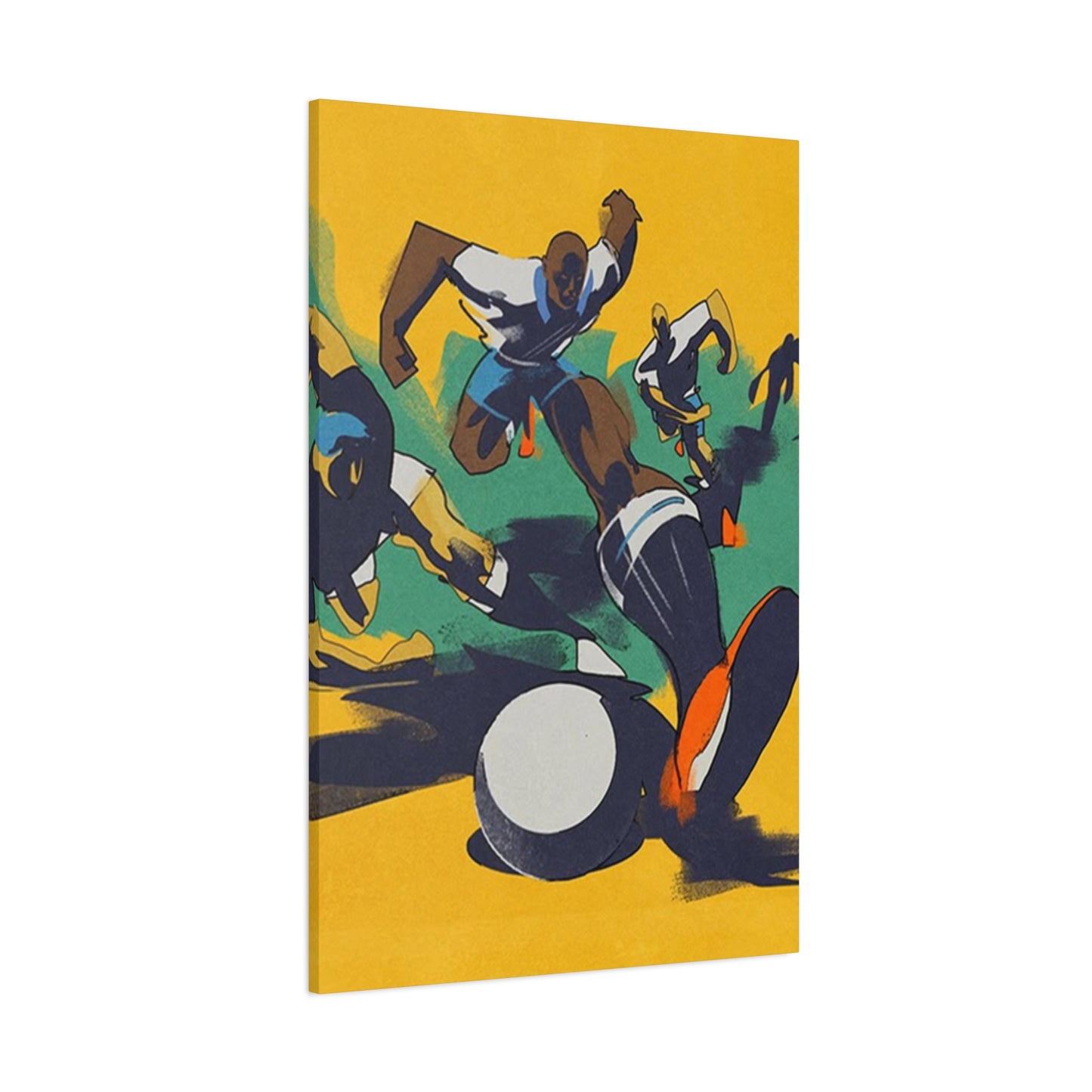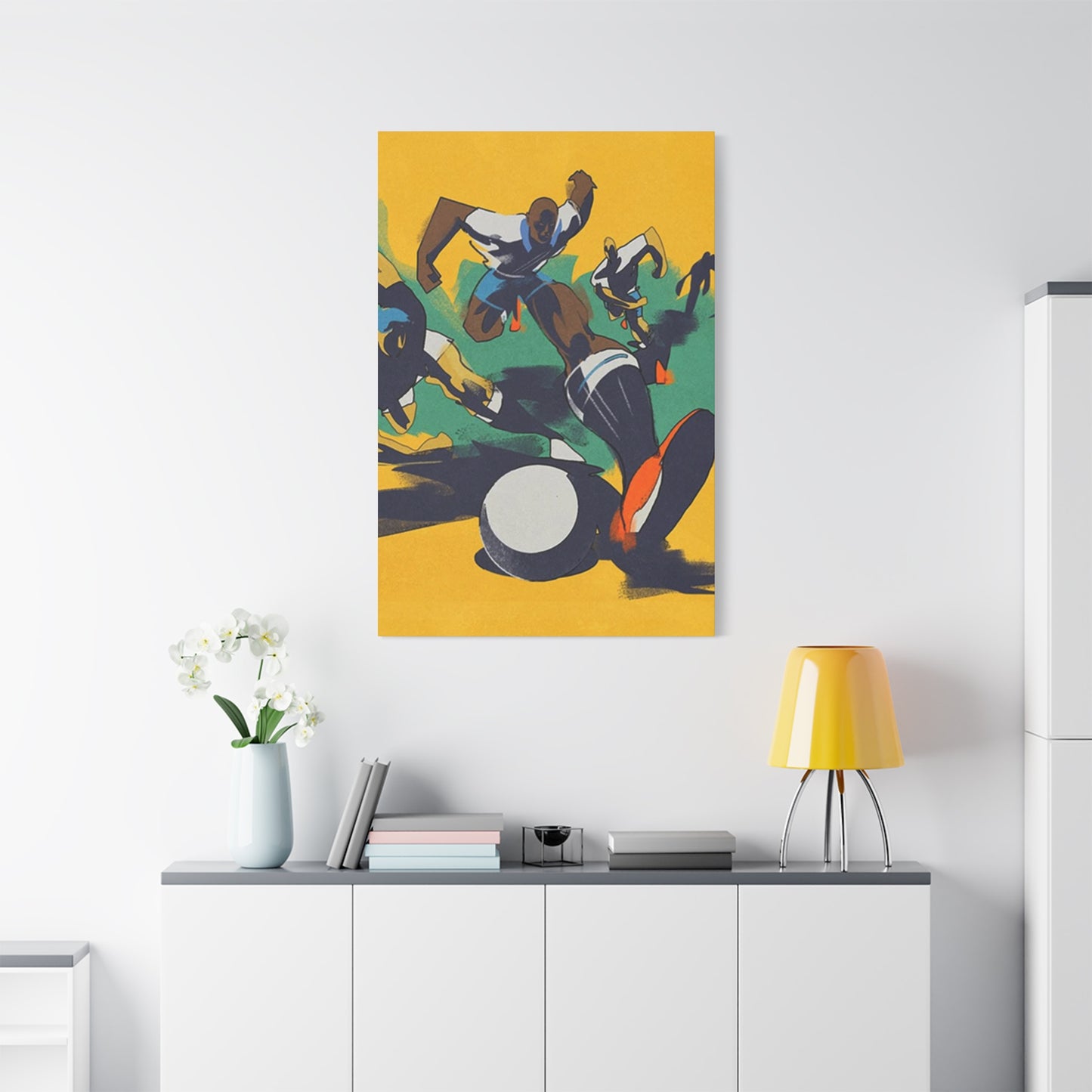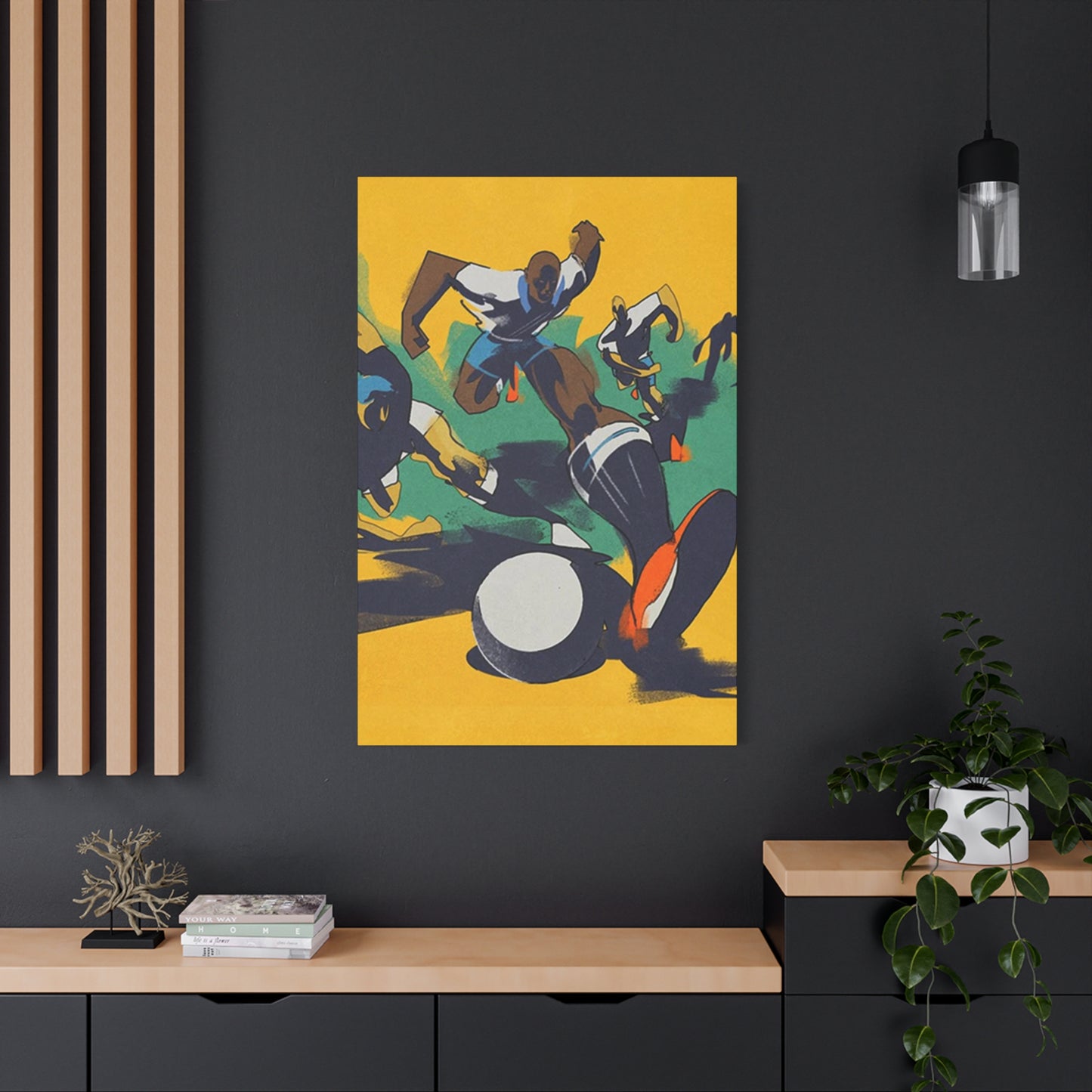The Evolution of Soccer Animation Wall Art: From Vintage Posters to Digital Masterpieces
Soccer is more than just a sport. It represents passion, energy, movement, and emotion that transcends borders and languages. For millions of fans worldwide, the beautiful game is a way of life, and bringing that spirit into living spaces has become an increasingly popular trend. The emergence of motion-driven soccer wall art has revolutionized how enthusiasts express their love for football within their homes. This comprehensive exploration delves into the world of dynamic soccer-themed decor, examining how animated designs, action-packed imagery, and stylish representations can transform ordinary walls into captivating displays of athletic artistry.
The Evolution of Sports-Themed Interior Design
The relationship between sports and home decoration has undergone remarkable transformation over recent decades. What once consisted primarily of team pennants and simple posters has evolved into a sophisticated design movement. Modern homeowners and renters alike seek ways to incorporate their passions into their living environments without compromising aesthetic appeal or contemporary design principles.
Traditional sports memorabilia often created cluttered appearances or felt disconnected from overall interior design schemes. The challenge for football enthusiasts was finding decoration that honored their love for the game while maintaining visual harmony with modern design sensibilities. This gap in the market sparked innovation among artists and designers who recognized the need for sophisticated sports-inspired artwork that could stand alongside other contemporary design elements.
The transformation began when artists started viewing athletic moments through artistic lenses rather than purely documentary perspectives. Instead of simply reproducing photographs of famous players or memorable matches, creative professionals began abstracting the essence of soccer into visual compositions that captured movement, energy, and emotion. This shift allowed football-themed decoration to transcend the boundaries of traditional sports memorabilia and enter the realm of legitimate contemporary art.
Today's soccer-inspired wall pieces reflect diverse artistic movements including minimalism, abstract expressionism, geometric design, and digital illustration. These works appeal not only to die-hard fans but also to design-conscious individuals who appreciate the aesthetic qualities of motion, composition, and dynamic visual storytelling. The evolution represents a maturation of sports decoration from niche collectibles to mainstream design elements capable of anchoring sophisticated interior spaces.
Understanding Motion and Energy in Visual Composition
The fundamental appeal of soccer lies in its constant motion and unpredictable energy. Translating these kinetic qualities into static visual media presents unique challenges and opportunities for artists. Understanding how motion is perceived and represented in two-dimensional artwork provides insight into why certain soccer-themed pieces resonate more powerfully than others.
Human vision naturally tracks movement and responds to visual cues suggesting motion even in still images. Artists exploit this neurological phenomenon through various techniques including directional lines, progressive positioning, blur effects, and strategic composition. When viewing artwork that successfully captures motion, our brains unconsciously complete the action sequence, creating a sense of animation despite the static nature of the medium.
In soccer-themed artwork, motion representation often focuses on key moments that define the sport: the powerful extension of a striker's leg during a shot, the graceful arc of a goalkeeper's dive, the explosive acceleration of a player beating a defender, or the balletic rotation of a bicycle kick. These moments contain inherent drama that translates effectively into visual composition because they represent the peak of athletic action where potential energy converts to kinetic force.
Effective motion representation requires careful consideration of composition elements. Diagonal lines suggest instability and movement more effectively than horizontal or vertical orientations. Artists frequently position soccer players and balls along diagonal axes to enhance the perception of dynamic action. Similarly, asymmetrical compositions create visual tension that implies ongoing movement rather than static stability.
Color choices also contribute to motion perception. Warm colors like reds and oranges appear to advance toward viewers while cool blues and greens recede, creating depth that enhances three-dimensional motion representation. Strategic color application can make a striker appear to burst forward from the canvas or a ball seem to spin through space toward the viewer.
Background treatment significantly impacts motion perception in soccer artwork. Minimalist backgrounds with limited detail focus attention on the primary action and prevent visual competition. Conversely, motion blur effects in backgrounds can suggest high-speed movement by contrasting sharp subject rendering against deliberately softened environments, mimicking how our eyes perceive fast-moving objects in reality.
Behind Sports-Inspired Living Spaces
Surrounding ourselves with imagery related to our passions influences mood, motivation, and overall psychological wellbeing in measurable ways. The decision to incorporate soccer-themed elements into living spaces extends beyond simple decoration into the realm of environmental psychology and personal identity expression.
Research in environmental psychology demonstrates that our surroundings significantly impact emotional states, stress levels, and even cognitive function. Spaces that reflect personal interests and values create feelings of authenticity and belonging that contribute to overall life satisfaction. For soccer enthusiasts, surrounding themselves with football-inspired artwork reinforces connection to a passion that brings joy and meaning to their lives.
The presence of dynamic, action-oriented imagery also influences energy levels and motivation. Studies show that viewing images of athletic achievement can trigger mirror neuron responses that activate similar brain regions as actual physical activity. This neurological phenomenon means that soccer artwork depicting powerful kicks, strategic plays, or celebratory moments can generate subtle physiological responses that increase energy and positive mood.
Identity expression represents another crucial psychological function of sports-themed decoration. Our homes serve as extensions of ourselves, communicating to visitors and reminding us of who we are and what we value. Soccer enthusiasts who display football-inspired artwork make visible statements about their identities and create conversation opportunities with like-minded individuals who share their passion.
The type of soccer imagery chosen also reveals personality dimensions. Fans who select minimalist, abstract representations might value sophistication and contemporary aesthetics while those preferring realistic action shots might prioritize authenticity and documentary accuracy. Some enthusiasts choose artwork featuring their favorite teams or players, directly linking their spaces to specific football loyalties, while others prefer generic representations that celebrate the sport universally.
Social connection forms another psychological benefit of sports-themed spaces. When fellow football fans visit homes decorated with soccer artwork, immediate bonding opportunities arise through shared passion. These decorative choices serve as social signals that facilitate connection and create comfortable environments for watching matches together or discussing football topics.
Minimalist Approaches to Soccer Wall Decoration
The minimalist design movement has profoundly influenced contemporary interior decoration, and soccer-themed artwork has evolved to align with these aesthetic principles. Minimalist soccer pieces demonstrate that powerful design impact doesn't require visual complexity, proving that restrained compositions can capture the essence of the beautiful game as effectively as detailed representations.
Minimalist soccer artwork typically employs limited color palettes, often restricting compositions to two or three carefully selected hues. Monochromatic schemes featuring black silhouettes against white backgrounds create striking visual contrast while maintaining visual simplicity. These high-contrast compositions draw immediate attention without overwhelming surrounding design elements, making them versatile choices for diverse interior styles.
Geometric reduction represents another hallmark of minimalist soccer design. Artists abstract player forms into simplified shapes that suggest human figures without rendering anatomical details. These geometric representations capture essential postures and movements associated with soccer while eliminating extraneous information. The result feels contemporary and sophisticated while remaining immediately recognizable as football-related imagery.
Line work in minimalist soccer pieces often carries significant compositional weight. Single continuous lines might trace a player's form from head to toe, creating elegant representations through economic mark-making. These contour drawings capture gesture and movement with remarkable efficiency, demonstrating artistic skill through what is excluded as much as what is included.
Negative space utilization distinguishes exceptional minimalist soccer artwork. Rather than filling entire compositions with visual information, skilled designers allow empty space to define forms and suggest motion. A player silhouette positioned against expansive negative space creates focus and implies the open pitch environment where football occurs. This spatial relationship enhances the sense of isolation that strikers experience during penalty kicks or the solitary responsibility goalkeepers face.
Typography integration occurs frequently in minimalist soccer pieces, with designers incorporating words or phrases that enhance thematic content. Single words like goal, passion, or victory might appear in clean sans-serif fonts, reinforcing conceptual messages without visual clutter. Some artists include jersey numbers or player positions using minimal typographic elements that complement rather than dominate compositions.
The versatility of minimalist soccer artwork makes it particularly appealing for diverse interior applications. These pieces integrate seamlessly into modern, Scandinavian, industrial, and contemporary design schemes without stylistic conflict. Their visual restraint allows them to complement rather than compete with furniture, textiles, and other decorative elements, making them practical choices for design-conscious football fans.
Bold Silhouettes and High-Contrast Soccer Imagery
While minimalism emphasizes restraint, bold silhouette-based soccer artwork takes a more dramatic approach to capturing football's energy. These high-contrast pieces create immediate visual impact through stark relationships between figure and ground, making powerful statements that command attention in any space.
Silhouette representation eliminates interior detail while emphasizing overall form and gesture. This reduction focuses viewer attention on body positioning, movement quality, and compositional dynamics rather than surface features or specific player identities. The abstraction created through silhouetting allows viewers to project their own experiences and memories onto the forms, creating personal connections that realistic photography might not achieve.
Action poses selected for silhouette treatment typically showcase peak athletic moments where body position clearly communicates the action being performed. The extended leg of a player striking the ball, the arched back of someone executing a header, or the spread-eagle position of a diving goalkeeper all translate effectively into silhouette form because their gestures remain readable without interior detail.
Color relationships in bold silhouette work dramatically impact overall effect. Black figures against white grounds create classic, timeless appearances that suit traditional and contemporary interiors alike. Inverted relationships with white figures on black backgrounds produce more dramatic, moody atmospheres particularly effective in modern or industrial settings. Some artists introduce accent colors in limited applications, perhaps rendering the ball in a bright hue while keeping player forms monochromatic, creating focal points that guide viewer attention.
Multiple figure compositions in silhouette style can capture game dynamics that single-player images cannot convey. Defensive stands showing multiple players competing for aerial balls, attacking sequences with passing combinations, or goal celebrations with teammates embracing all become more powerful when rendered as interconnected silhouettes. These multi-figure compositions suggest the collaborative nature of soccer while maintaining visual clarity through simplified rendering.
Scale considerations significantly affect the impact of silhouette-based soccer artwork. Large-scale pieces approaching life-size dimensions create immersive experiences where viewers feel the physical presence of athletic action. Oversized silhouettes work particularly well in spaces with high ceilings or expansive wall surfaces where their bold presence anchors the room. Conversely, smaller silhouette collections arranged in grids or series create visual interest through repetition and variation rather than individual scale.
Background treatment in silhouette work ranges from pure solid colors to subtle texture or pattern. Some artists incorporate field markings, crowd impressions, or stadium elements rendered in muted tones that don't compete with primary silhouette forms. These environmental suggestions provide context without compromising the bold simplicity that makes silhouette imagery effective.
Capturing Celebrated Moments Through Artistic Interpretation
Soccer's greatest power lies in its capacity to generate unforgettable moments that resonate across time and geography. Translating these celebrated instances into artistic form requires balancing recognizability with creative interpretation, honoring the original moment while contributing unique artistic perspective.
Iconic celebrations offer particularly rich material for artistic exploration. The emotional explosion following crucial goals contains visual drama that translates powerfully into static imagery. Artists capture these moments not through literal reproduction but through compositions that distill the essential emotional energy into visual form. The triumphant gesture of arms raised skyward, the explosive sprint toward celebrating fans, or the collective embrace of teammates all communicate universal joy that transcends specific matches or players.
Decisive game actions like penalty kicks carry inherent tension that artists exploit through compositional choices. The solitary confrontation between kicker and goalkeeper contains psychological drama that extends beyond physical action. Artwork depicting these moments often emphasizes isolation through compositional spacing, using negative space to reinforce the pressure both participants experience. The frozen instant before contact, when outcome remains uncertain, creates suspense that static artwork can preserve indefinitely.
Technical skill moments showcase the athletic artistry that makes soccer beautiful. Bicycle kicks, precisely curved free kicks, and acrobatic saves demonstrate physical capabilities that approach performance art. Artists drawn to these moments often emphasize the balletic quality of soccer at its highest level, revealing how elite athletes combine power, precision, and grace in ways that inspire aesthetic appreciation independent of competitive outcomes.
Underdog triumphs and breakthrough moments provide narrative richness that resonates emotionally. While avoiding specific player identification maintains broader appeal, artists can capture the essence of unexpected victory, last-minute drama, or championship glory through body language, compositional energy, and symbolic elements. These pieces speak to anyone who has experienced or witnessed improbable success against overwhelming odds.
Atmospheric conditions during memorable matches add dramatic potential to artistic interpretations. Rain-soaked pitches with players struggling for footing, snow-covered fields where the ball becomes difficult to track, or intense sun creating dramatic shadows all provide environmental elements that enhance visual interest while grounding action in specific physical circumstances. These conditions also metaphorically represent the challenges athletes overcome during competition.
Youth soccer moments offer touching alternatives to professional game imagery. Artwork depicting children experiencing soccer's joys for the first time, celebrating their earliest goals, or displaying determination during youth matches captures the pure passion that defines grassroots football. These pieces appeal to parents, coaches, and anyone who recognizes that soccer's true essence lives in the hearts of all who play, regardless of skill level or competitive tier.
Modern Design Integration for Football Enthusiasts
Successfully incorporating soccer-themed artwork into contemporary living spaces requires understanding how these pieces interact with broader design schemes. Modern interiors demand cohesive visual narratives where every element contributes to unified aesthetic experiences rather than competing for attention.
Color coordination between soccer artwork and existing interior palettes ensures visual harmony. When selecting football-themed pieces, identifying colors that echo existing furniture, textiles, or accent walls creates connections that make the artwork feel integrated rather than imposed. Many contemporary soccer designs offer multiple colorway options, allowing customization that matches specific interior requirements without compromising artistic quality.
Scale appropriateness prevents pieces from overwhelming or disappearing within their environments. Large, open walls benefit from substantial artwork that commands presence and anchors the space. Gallery walls or narrow spaces might better accommodate smaller pieces arranged in collections that create visual interest through grouping rather than individual scale. Understanding the relationship between artwork dimensions and available wall space ensures balanced compositions that enhance rather than disrupt interior flow.
Framing choices significantly impact how soccer artwork presents within modern interiors. Sleek, minimal frames in black, white, or metallic finishes complement contemporary aesthetics while providing necessary structural support and protection. Floating frames that create shallow gaps between artwork and frame edges add dimensional interest that enhances modern sensibilities. For certain pieces, frameless mounting using standoffs or acrylic face mounting creates ultra-contemporary presentations that blur boundaries between artwork and architecture.
Lighting design transforms how soccer artwork appears and functions within spaces. Dedicated picture lights or adjustable track systems allow highlighting specific pieces while creating ambient illumination. Proper lighting reveals colors accurately, emphasizes textures, and creates subtle shadows that add dimensional interest. In rooms where soccer artwork serves as focal points, lighting design should prioritize these pieces, drawing attention and creating visual hierarchy.
Furniture arrangement should complement rather than conflict with soccer artwork placement. Positioning seating areas where occupants naturally view the artwork during conversation or relaxation maximizes its impact and integration into daily life. Avoiding placement where furniture backs directly face artwork ensures pieces remain visually accessible and psychologically present rather than relegated to ignored wall sections.
Material considerations extend beyond the artwork itself to surrounding elements. In modern interiors featuring natural materials like wood, stone, or leather, soccer pieces rendered on textured substrates or incorporating natural frames create material dialogues that enhance cohesion. Conversely, spaces emphasizing industrial materials like metal, concrete, and glass might pair better with soccer artwork featuring crisp lines, high contrast, and contemporary production methods like metal prints or acrylic mounting.
Action Lines and Dynamic Visual Flow
Movement representation in visual art relies heavily on directional elements that guide viewer attention and suggest motion beyond the frozen instant captured. Action lines, whether literal marks or implied compositional flows, transform static soccer imagery into dynamic compositions that pulse with athletic energy.
Explicit action lines appearing as drawn marks in soccer artwork directly communicate motion through graphic convention. These lines might trail behind moving players suggesting speed, radiate from impact points where foot meets ball indicating force, or sweep across compositions guiding eyes through sequential action. While this technique can appear cartoon-like when handled poorly, skilled artists integrate action lines so they enhance rather than distract from primary imagery.
Compositional flow creates implied action lines through strategic element arrangement. Positioning players, balls, and other elements along diagonal trajectories establishes directional movement that viewers naturally follow. These invisible lines guide attention through compositions in predetermined sequences, controlling how visual information is received and processed. Effective compositional flow creates narrative progression within single images, suggesting what happened before the captured moment and what might follow.
Repeated elements generate rhythm that implies temporal progression. Series of diminishing or color-shifting player forms suggest motion through space over time, similar to stop-motion photography. These sequential representations compress action into single compositions, allowing artwork to convey entire movements rather than isolated instants. The technique particularly suits soccer actions like dribbling sequences or shooting motions that involve multiple distinct positions.
Directional blur effects borrowed from photography create motion impression through selective focus. Rendering moving elements with deliberate softness while maintaining sharp focus on key subjects mimics how human vision perceives rapid movement. In soccer artwork, this might mean crisply rendered players contrasted against blurred backgrounds or sharp facial features with blurred limbs suggesting explosive action. These selective focus techniques add photographic authenticity while enhancing motion perception.
Vector-based design elements contribute dynamic flow through their inherent directionality. Arrows, chevrons, or abstract shapes pointing toward action directions reinforce movement suggestions established through figurative elements. When executed with restraint and integrated thoughtfully, these graphic additions enhance contemporary design appeal while strengthening motion communication.
Color gradients following action trajectories create visual momentum that propels attention through compositions. Transitioning from cool to warm hues along movement paths mimics physical sensation of increasing energy or from dark to light suggesting emergence or revelation. These subtle color progressions operate subconsciously, influencing how viewers experience artwork without overtly drawing attention to the technique itself.
Asymmetrical balance in soccer action compositions creates visual tension that reads as unstable and therefore active. Unlike symmetrical arrangements suggesting stability and rest, asymmetrical compositions feel momentary and transitional, implying the captured instant represents a brief pause in ongoing action. This compositional approach aligns perfectly with soccer's constant motion, where players remain in perpetual flux between positions and actions.
Stylistic Diversity in Football-Inspired Visual Art
The world of soccer-themed artwork encompasses remarkable stylistic diversity, reflecting both the global nature of football and the varied artistic traditions artists bring to the subject. Understanding this range allows enthusiasts to select pieces that resonate personally while complementing their specific aesthetic preferences.
Photorealistic approaches render soccer imagery with precise detail that captures texture, light, and atmosphere with near-photographic accuracy. These pieces appeal to fans valuing documentary authenticity and recognizable representation. Photorealistic soccer artwork often focuses on close-up moments where facial expressions, muscle tension, and equipment details create intimate connections between viewers and depicted action. The technical mastery required for this style generates appreciation from audiences who recognize the skill involved in achieving such convincing illusion.
Abstract interpretations reduce soccer to fundamental visual elements like color, shape, and line, creating compositions that suggest rather than depict the sport. These pieces appeal to viewers seeking artwork that functions aesthetically independent of subject matter recognition. Abstract soccer art might employ the circular form of the ball as a recurring motif, use field geometry as compositional structure, or translate game energy into color relationships and gestural marks. This approach allows football themes to integrate seamlessly into sophisticated contemporary interiors where literal representation might feel incongruous.
Graphic design-influenced soccer artwork employs bold typography, flat color areas, and simplified forms characteristic of poster design and visual communication. These pieces often feature strong conceptual foundations where idea and execution merge into cohesive statements. Graphic soccer art might play with language through clever wordplay relating to football terminology, employ symbolic imagery representing aspects of the game, or use iconography that has become associated with soccer culture globally.
Street art aesthetics bring urban energy to soccer themes, reflecting how football functions as cultural force in cities worldwide. Graffiti-inspired pieces might incorporate spray paint textures, stencil techniques, or layered visual complexity characteristic of street art. This style particularly resonates with younger audiences and those drawn to counter-culture aesthetics, acknowledging soccer's role as both establishment sport and grassroots cultural expression.
Vintage and retro styles reference earlier eras of soccer history through period-appropriate color palettes, typography choices, and reproduction techniques. These pieces evoke nostalgia for football's past while creating aesthetic connections to mid-century design movements. Faded colors, distressed textures, and simplified forms characteristic of vintage printing processes create authentic period feeling that appeals to collectors and history enthusiasts.
Digital illustration techniques enable entirely new aesthetic possibilities unavailable through traditional media. Gradient meshes, vector precision, and effects processing create polished, contemporary appearances that feel native to screen-based media. Digital soccer artwork often exhibits color vibrancy and tonal range difficult to achieve through physical media, making these pieces particularly suitable for modern interiors emphasizing technology and innovation.
Mixed media approaches combine multiple techniques and materials into single compositions that exhibit textural and visual complexity. These pieces might integrate photography with painting, combine digital and traditional elements, or incorporate three-dimensional components that extend artwork beyond flat picture planes. Mixed media soccer art appeals to collectors seeking unique pieces that transcend conventional categories and demonstrate experimental artistic approaches.
The Emotional Resonance of Goal Celebration Imagery
Few moments in sports carry the pure emotional intensity of goal celebrations in soccer. The explosion of joy following successful strikes represents human emotion at its most uninhibited, making celebration imagery particularly powerful subject matter for artistic interpretation.
Spontaneous physical expressions during celebrations translate remarkably well into visual art because they represent unrehearsed, authentic human responses. The instinctive raising of arms, the uncontrolled facial expressions of ecstasy, and the explosive movement toward teammates or fans all communicate joy that transcends language and culture. Artists capturing these moments tap into universal emotional experiences that resonate regardless of viewers' specific soccer knowledge or team allegiances.
Collective celebration scenes showcase soccer's social dimension and tribal nature. Multiple players converging in embraces, entire teams piling onto goal scorers, or coordinated celebration choreography all emphasize football's fundamental role as collective endeavor. These group celebration images appeal particularly to viewers who value teamwork, community, and shared experience, extending soccer's metaphorical reach beyond individual achievement toward collaborative success.
Celebrations directed toward specific audiences create narrative complexity within celebration imagery. Players sprinting toward supporter sections acknowledge the symbiotic relationship between athletes and fans. Goal scorers pointing skyward honor personal dedications or spiritual beliefs. Celebrations incorporating protest gestures or social messages demonstrate how soccer functions as platform for expression beyond pure athletic competition. Artists sensitive to these nuances create celebration imagery that invites interpretation and discussion beyond surface appearances.
The temporal aspect of celebrations offers artistic opportunities. The suspended moment immediately following a goal when the ball nestles in netting and the scorer begins to realize success contains unique psychological tension. This instant before celebration fully erupts holds anticipatory energy that skilled artists can capture, creating compositions that feel like compressed springs about to release. Alternatively, capturing the peak celebration moment when joy reaches maximum expression creates emotional intensity that radiates from artwork itself.
Contrast between celebrating and defeated players introduces dramatic tension into goal celebration imagery. Including glimpses of disappointed opponents or dejected goalkeepers alongside ecstatic scorers acknowledges soccer's zero-sum nature where one team's joy emerges from another's disappointment. This emotional duality creates psychological depth that makes artwork more contemplative and complex than pure celebration imagery alone achieves.
Cultural variations in celebration styles provide material for artistic exploration. Different regions and teams develop signature celebration approaches reflecting local culture and team identity. Latin American exuberance differs from European restraint, while African celebrations might incorporate dance elements absent elsewhere. Artists attentive to these cultural dimensions create celebration imagery that acknowledges football's global diversity while potentially educating viewers about traditions beyond their immediate experience.
Geometric Abstraction in Soccer Design
Geometric abstraction offers sophisticated approaches to representing soccer through fundamental visual building blocks. By reducing complex athletic action to basic shapes and their spatial relationships, geometric soccer artwork achieves timeless aesthetic appeal while maintaining thematic connection to the sport.
The soccer ball itself provides obvious geometric foundation, with its traditional black pentagon and white hexagon pattern offering ready-made design element. Artists extend this geometry throughout compositions, perhaps depicting players or field elements using similar pentagonal or hexagonal structures. This geometric consistency creates visual harmony while establishing clear soccer association through the ball's iconic form.
Tessellation and pattern-based approaches treat soccer imagery as opportunity for complex geometric arrangement. Repeated player forms might interlock to fill compositional space completely, creating allover patterns where individual elements become subordinate to overall geometric effect. These approaches emphasize design and decoration over representational accuracy, allowing soccer themes to function within abstract artistic traditions.
Angular faceting breaks soccer imagery into planar surfaces that suggest three-dimensional form through geometric relationships. Similar to cubist approaches, these faceted representations capture multiple perspectives simultaneously while maintaining recognition of soccer subject matter. The technique creates contemporary, digital-age aesthetics that appeal to audiences appreciating intersection of technology and traditional artistic concerns.
Sacred geometry principles applied to soccer compositions introduce mathematical order and symbolic meaning. Golden ratio proportions, Fibonacci spirals, or mandala structures might organize player positions and ball trajectories. These mathematically derived compositions create subliminal harmony that viewers perceive as aesthetically pleasing even without conscious recognition of underlying geometric principles.
Field line geometry provides built-in compositional structure that artists can exploit. The rectangular pitch, center circle, penalty areas, and corner arcs all offer geometric frameworks around which to organize imagery. Emphasizing these geometric elements transforms functional field markings into abstract compositional devices that ground soccer themes while contributing to overall design sophistication.
Color blocking within geometric structures creates bold visual statements characteristic of mid-century modern design. Large areas of flat, unmodulated color separated by crisp boundaries generate graphic punch that commands attention. When applied to soccer themes, this approach might reduce players to simple geometric shapes filled with solid colors, creating compositions that balance abstraction with recognizable subject matter.
Three-dimensional geometric forms introduce sculptural qualities into soccer artwork. Spheres representing balls, rectangular forms suggesting players or goal structures, and planar elements indicating the pitch create compositions with implied depth and dimensional complexity. When rendered with careful attention to light and shadow, these geometric forms appear to occupy space beyond the picture plane, creating engaging visual experiences that reward extended viewing.
Energetic Color Palettes for Football Artwork
Color selection profoundly impacts how soccer artwork communicates energy, mood, and stylistic identity. Understanding color theory and its psychological dimensions allows both artists and collectors to make informed decisions that enhance overall effectiveness of football-themed pieces.
High-energy color combinations featuring complementary pairs create maximum visual vibration and excitement. Orange and blue, red and green, or yellow and purple combinations generate optical tension that reads as dynamic and active. These relationships suit soccer's inherent energy while creating eye-catching displays that function effectively as focal points within interior spaces. The intensity of complementary relationships can be modulated through saturation and value adjustments, allowing subtle variations that maintain visual interest without overwhelming environments.
Analogous color schemes employing adjacent hue families create more harmonious, less confrontational experiences. Blue-green-teal ranges evoke cool sophistication while orange-red-pink progressions generate warm, welcoming atmospheres. Analogous palettes allow soccer artwork to integrate more seamlessly into existing interior color schemes while maintaining sufficient visual interest to justify their presence as featured elements.
Monochromatic approaches restricting palettes to single hue families create sophisticated, unified appearances. Variations in value and saturation within the chosen color provide visual interest and dimensional modeling without introducing additional hues. Monochromatic soccer artwork appeals to minimalist sensibilities and integrates particularly well into restrained contemporary interiors where multicolored pieces might disrupt carefully controlled color schemes.
Accent color strategies employ predominantly neutral palettes punctuated by single bright hues that capture attention. Black, white, and gray compositions might feature balls, jerseys, or other elements in vibrant reds, yellows, or blues that function as focal points. This approach combines minimalist restraint with strategic color impact, allowing soccer artwork to make statements without overwhelming spaces or conflicting with existing decorative schemes.
Team color incorporation allows football fans to reference specific club or national team identities through artwork palettes. While avoiding explicit logos or official elements, artists can employ signature color combinations that knowledgeable fans immediately recognize. This subtle referencing creates insider connections that deepen personal meaning without limiting appeal to those unfamiliar with specific team associations.
Gradient transitions create movement and dimensional effects through color progressions. Smooth transitions from dark to light or warm to cool hues generate visual momentum that enhances motion representation. Radial gradients emanating from impact points suggest energy release while linear progressions along action trajectories reinforce directional movement. Contemporary digital production methods facilitate gradient sophistication difficult to achieve through traditional media.
Psychological color associations influence how viewers emotionally respond to soccer artwork. Red communicates passion, aggression, and intensity appropriate for competitive sports imagery. Blue suggests control, strategy, and calm determination. Yellow conveys optimism and energy while green connects to the natural pitch environment. Understanding these associations allows intentional emotional communication through strategic palette selection.
Textural Depth in Contemporary Soccer Prints
While soccer artwork exists primarily as visual medium, incorporating textural elements adds dimensional interest that enhances viewer engagement and creates premium aesthetic qualities. Various production methods and artistic techniques introduce texture that transforms flat prints into multisensory experiences.
Canvas texture provides classic artistic substrate whose inherent weave creates subtle surface variation. When soccer imagery is printed on canvas, the material's texture interacts with the image, breaking up solid color areas and adding organic irregularity that distinguishes canvas prints from smooth photographic papers. The texture becomes particularly visible in lighter image areas where the white canvas substrate shows through thin ink layers. Canvas mounted on stretcher frames and gallery-wrapped around edges creates substantial three-dimensional objects that project from walls more prominently than framed prints behind glass.
Embossing and debossing techniques create raised or recessed areas within soccer artwork that invite tactile exploration. Ball patterns might be embossed to create actual spherical texture while player forms could be debossed to create depth variation. These dimensional effects create premium presentation quality and unique viewer experiences unavailable through purely printed imagery. The interplay between light and shadow across embossed or debossed surfaces adds visual complexity that changes as viewing angles shift.
Mixed media layering introduces actual dimensional variation through applied materials. Some contemporary soccer artwork incorporates elements like modeling paste creating raised textures, sand or grit adding rough surfaces, or metallic leaf contributing reflective qualities. These physical additions transform prints into unique hybrid objects that exist between traditional printmaking and sculptural expression. Each piece becomes genuinely unique as manual material application introduces inherent variation.
Gel medium applications in acrylic-based soccer artwork create translucent layers that build dimensional complexity while maintaining color visibility. Multiple gel layers with varying transparency and texture create depth that mimics oil painting impasto effects. Artists might apply heavy texture in motion lines or impact areas while keeping other composition areas smooth, creating textural contrast that enhances visual dynamics.
Paper texture selection influences final print character significantly. Smooth hot-press papers create crisp, clean presentations that suit graphic design-influenced soccer work. Rough watercolor papers introduce organic texture that softens hard edges and adds handmade quality. Specialty papers incorporating embedded fibers, mica particles, or other materials create unique surface effects that distinguish prints from standard reproductions.
Varnish and coating applications protect soccer prints while introducing surface qualities ranging from high gloss to completely matte. Glossy surfaces create vibrant color saturation and slight reflectivity that generates dimensional illusion. Matte finishes eliminate glare and create sophisticated, museum-quality presentations. Some artists employ selective varnishing applying gloss to specific areas while leaving others matte, creating surface variation that adds subtle complexity to viewer experiences.
Metallic ink incorporation introduces reflective qualities that catch light dynamically as viewing angles change. Metallic gold or silver might highlight jersey details, goal netting, or other elements within soccer compositions. These reflective accents create luxury aesthetic while adding animation as viewers move past artwork and lighting conditions shift. The effect works particularly well in pieces incorporating minimalist designs where metallic accents can function as sophisticated compositional elements.
Scale Considerations for Maximum Visual Impact
The physical dimensions of soccer artwork dramatically affect its presence and impact within interior spaces. Understanding scale relationships between artwork, walls, and surrounding furnishings allows strategic placement decisions that optimize visual effectiveness.
Statement-scale pieces approaching or exceeding human height create immersive experiences that command immediate attention. Large soccer artwork transforms walls into virtual windows onto action, creating visceral connections between viewers and depicted athletes. These substantial pieces work best in spaces with generous wall areas uninterrupted by windows, doors, or architectural features. Living rooms with expansive walls above sofas, dining rooms with large empty walls, or home gym spaces provide ideal locations where oversized soccer art can anchor rooms and establish design identity.
Medium-scale artwork ranging from two to four feet in either dimension provides substantial visual presence without overwhelming most residential spaces. These dimensions suit typical furniture relationships, hanging comfortably above sofas, consoles, or bedroom headboards while maintaining appropriate proportional balance. Medium-scale soccer pieces offer practical versatility, working effectively in diverse room types and accommodating various interior design approaches from minimalist to maximalist.
Small-scale individual pieces measuring under two feet enable flexible arrangement possibilities. While single small artworks might lack sufficient impact for large empty walls, collections of smaller soccer pieces arranged in grids, clusters, or linear progressions create dynamic displays exceeding the impact of equivalent-area single images. This approach allows curating diverse soccer imagery representing different actions, styles, or teams within unified overall presentations.
Triptych and multi-panel formats distribute single compositions across multiple canvases or frames, creating sophisticated installations that add architectural interest. Soccer action might progress sequentially across three panels showing approach, strike, and aftermath of a shot. Alternatively, single images extended across multiple panels gain dimensional complexity through physical breaks between sections. These multi-panel approaches suit contemporary design aesthetics while allowing impressive overall scale achieved through multiple moderate-sized components rather than single overwhelming pieces.
Vertical versus horizontal orientation choices significantly impact where soccer artwork can effectively hang and how it interacts with architectural features. Tall vertical compositions work well in narrow wall sections between windows, alongside doorways, or in hallway spaces where horizontal pieces wouldn't fit appropriately. Horizontal orientations suit spaces above furniture, beds, or in wide, low-ceiling areas where vertical pieces would feel cramped or disproportionate.
Proportion relationships between artwork and surrounding furniture require careful consideration. Design principles suggest artwork width should measure between half and three-quarters of underlying furniture width for balanced appearance. Soccer art hanging above sofas, console tables, or bedroom headboards should respect these proportions to avoid appearing lost on expansive walls or overwhelming the furniture below. In spaces without underlying furniture, artwork should relate proportionally to overall wall dimensions rather than specific furnishing pieces.
Ceiling height influences appropriate artwork scale with taller rooms accommodating larger pieces more effectively. Standard eight-foot ceilings limit practical artwork height while ten-foot or higher ceilings enable statement-scale vertical compositions. When hanging soccer artwork in high-ceiling spaces, positioning pieces with centers at or slightly above standing eye level maintains appropriate viewer relationships regardless of actual ceiling height. This typically places centers between 57 and 63 inches above floor level, the standard museum hanging height that optimizes viewing comfort.
Installation Strategies for Professional Presentation
Proper installation transforms soccer artwork from loose prints into professionally integrated design elements. Understanding hanging techniques, hardware selection, and placement principles ensures pieces appear polished and intentional rather than haphazardly placed afterthoughts.
Wall preparation provides foundation for successful installations. Locating studs or using appropriate wall anchors rated for artwork weight prevents failures that could damage both art and walls. For substantial soccer pieces, installing professional-grade hanging systems with adjustable hooks allows precise positioning and easy relevance if design schemes change. Picture rails or track systems provide maximum flexibility for spaces where artwork arrangements might evolve over time.
Height placement dramatically affects how viewers interact with soccer artwork. The universal 57-inch center-height standard works well for most applications, positioning artwork at average adult eye level when standing. However, viewing context should influence these decisions. Artwork intended primarily for viewing while seated might hang slightly lower to accommodate the reduced sight line elevation. Conversely, pieces positioned in circulation areas where viewers primarily pass while walking might benefit from slightly elevated placement.
Spacing considerations matter significantly in multi-piece arrangements. When creating soccer artwork groupings, maintaining consistent intervals between pieces creates organized, intentional appearances. Standard gallery spacing places frames two to three inches apart, though this can adjust based on frame size and overall design intention. Measuring carefully and using temporary positioning aids like paper templates prevents nail holes in incorrect positions.
Conclusion:
The evolution of soccer animation wall art is a vivid testament to how art, technology, and culture intersect to celebrate one of the world’s most beloved sports. From the nostalgic charm of vintage posters to the dynamic energy of cutting-edge digital masterpieces, soccer animation art has transformed alongside the game itself, reflecting changing tastes, artistic techniques, and technological advancements. This journey not only highlights the enduring passion for soccer but also reveals how artistic expression adapts to new mediums while preserving the spirit of the sport.
Vintage soccer posters and early animation art carry a certain timeless appeal. These works, often hand-drawn and painted, embody the raw enthusiasm of soccer’s formative years and the cultural excitement that surrounded major tournaments. The simplicity of design, bold colors, and iconic imagery evoke a sense of nostalgia that connects fans across generations. These early pieces functioned not only as promotional tools but also as cultural artifacts—capturing the style, fashion, and social dynamics of their era. Their handcrafted nature conveys a warmth and intimacy that digital art sometimes struggles to replicate.
As technology advanced, the medium of soccer animation wall art expanded dramatically. The introduction of digital tools, computer graphics, and animation software has allowed artists to push the boundaries of creativity and realism. Today’s digital masterpieces offer fluid motion, vibrant colors, and intricate details that bring the excitement and drama of soccer to life like never before. The ability to animate players, simulate match moments, and blend traditional artistic techniques with modern effects has transformed wall art into immersive experiences. This progression showcases the marriage between sport and technology, illustrating how innovation can elevate storytelling and emotional impact in art.
Beyond technique, the evolution of soccer animation wall art reflects broader cultural shifts within the sport itself. Soccer has grown from a regional pastime to a global phenomenon, and its art mirrors this expansion. Contemporary artworks often incorporate diverse styles, multicultural influences, and global narratives, celebrating the sport’s universal language. Digital platforms also enable artists worldwide to share their work instantly, creating a vibrant, interconnected community that fuels creativity and inspiration. This democratization of art production and distribution marks a significant departure from the localized, limited reach of vintage posters, illustrating the impact of globalization and digital communication.
Moreover, soccer animation wall art today often serves a deeper purpose beyond decoration or fandom. Many contemporary pieces explore themes of identity, social justice, and empowerment within the sport. Artists use their platforms to highlight underrepresented players, address inequalities, and celebrate moments of courage on and off the field. This evolution from simple celebration to critical engagement reflects the sport’s growing role in broader societal conversations. It also demonstrates how art continues to be a powerful tool for advocacy and storytelling within the world of soccer.
The transition from vintage to digital also influences how fans interact with soccer art. Whereas vintage posters were often static and confined to physical spaces, digital soccer animations can be experienced on multiple devices and formats, including large-scale projections, interactive installations, and virtual reality environments. This versatility enriches the fan experience, enabling greater immersion and personal connection to the sport. It also opens new avenues for artists to experiment with form and content, inviting audiences to engage actively with the art rather than merely observe it.
In reflecting on this evolution, it is clear that soccer animation wall art is much more than decorative imagery—it is a living narrative of the sport’s history, culture, and impact. Each era’s artworks encapsulate the prevailing spirit of their time, from the handcrafted enthusiasm of vintage posters to the sophisticated storytelling of today’s digital creations. This continuum not only honors soccer’s past but also inspires future innovations, encouraging artists and fans alike to reimagine how the sport can be celebrated and interpreted through visual art.
Ultimately, the ongoing evolution of soccer animation wall art reminds us of the enduring power of creativity to capture the emotions and stories that sports evoke. Whether through the nostalgic strokes of a vintage poster or the immersive spectacle of a digital animation, this art form continues to unite communities, evoke passion, and celebrate the beautiful game in all its dimensions. As technology and culture continue to evolve, so too will soccer animation art—always reflecting the heart of the game and the spirit of its fans.

















